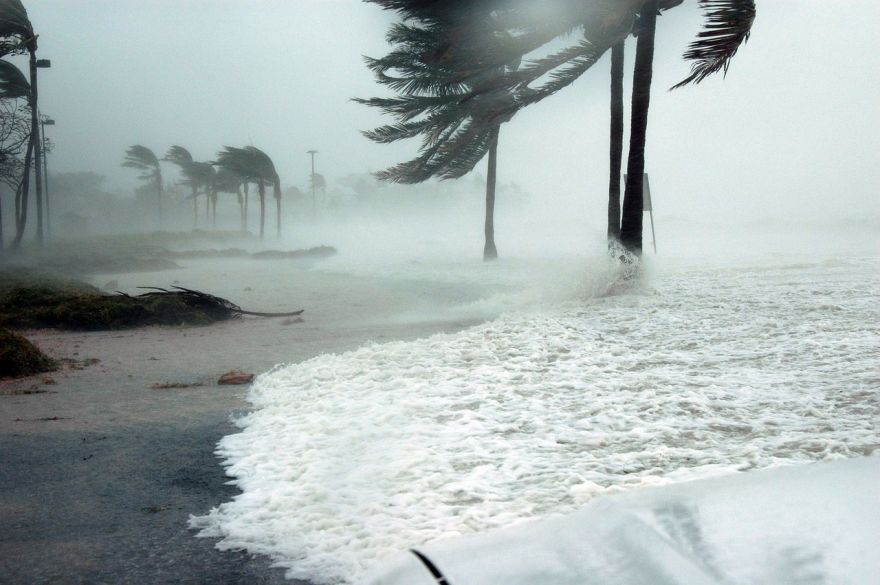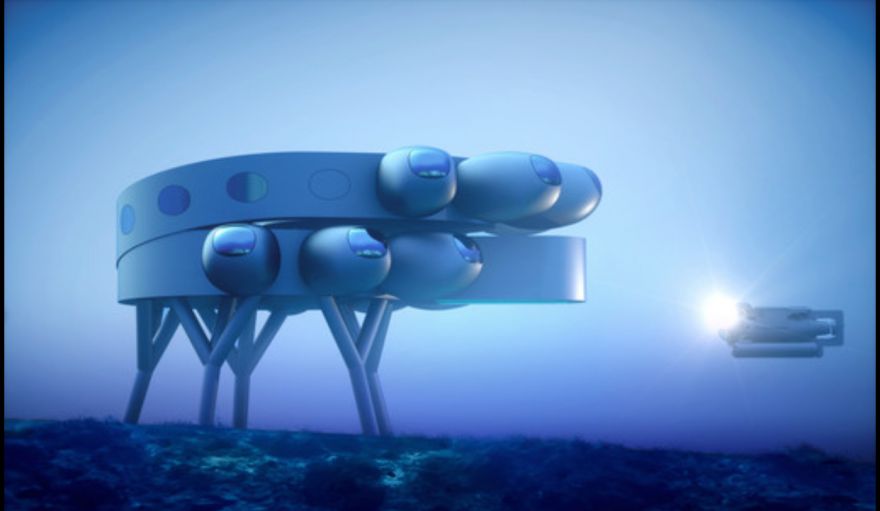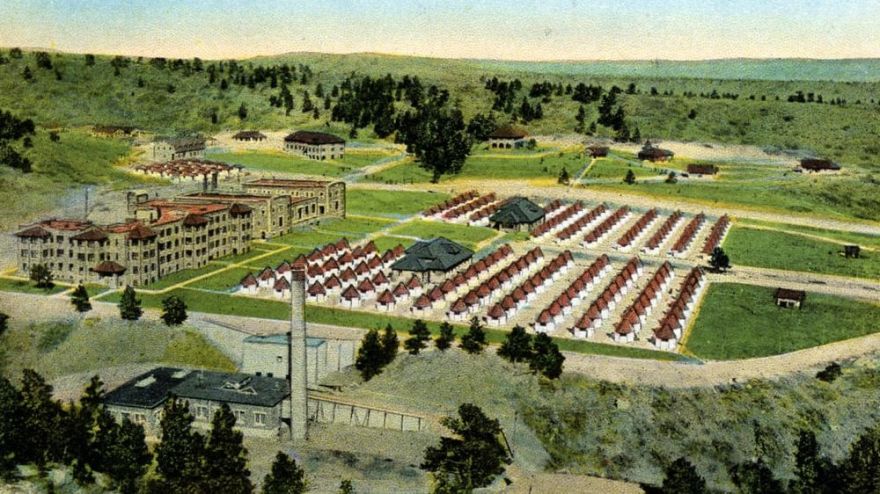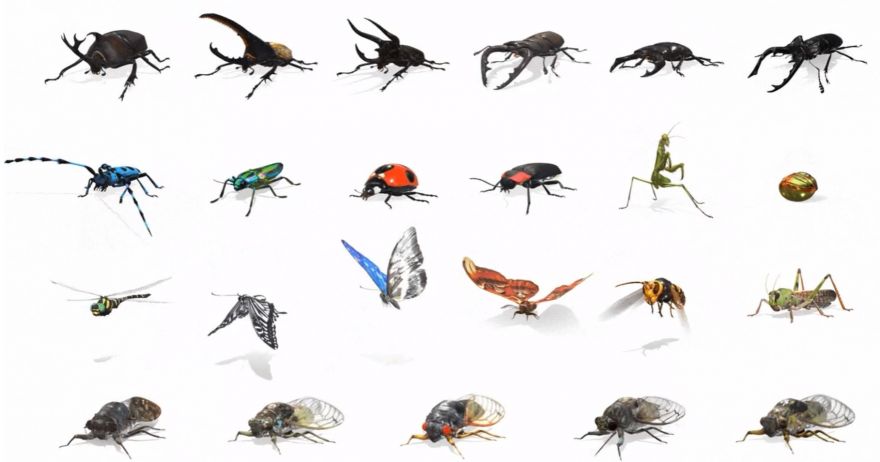Neatorama |
- Using Emoji for Digital-Age Language Learning
- How Hurricanes Shaped The History of the United States
- Who Wants A Cotton Candy Burrito?
- 50 Years Ago, This Man Terraformed Texas
- The <i>Titanic</i> Orphans
- This Is The World’s Largest Underwater Station
- Animal Crossing Adventures In Real Life - Crafting
- This Museum Is Wrapped In Diamond Scales
- Smog-Eating Building
- All The Buildings In The Most Dangerous Places In The World
- Man Balances Spinning Top on Dagger in His Mouth
- The City Built Upon Tuberculosis
- This Hydrogel Acts Like A Brain
- It’s Time People Did Something About Research Fraud
- These Creepy Crawlies Can Be Seen on Google’s AR Search Results Soon
| Using Emoji for Digital-Age Language Learning Posted: 30 Jul 2020 05:04 PM PDT
McCulloch takes us through the stages of learning communication with emoji, which children use in a profoundly different way from adults. Read what she's learned at Wired. |
| How Hurricanes Shaped The History of the United States Posted: 30 Jul 2020 05:04 PM PDT
Natural disasters have always been with us, ever since the formation of our planet. Countless times have they shaped the landscape, and countless times have they helped change the course of history. It is said that "divine winds" were what saved Japan from the Mongol invasion under Kublai Khan. The United States has had its own share of natural disasters, in the form of hurricanes, that helped shape the course of its history. David Kindy tells us of these instances over at his article at Smithsonian Magazine. The history of Atlantic hurricanes is inextricably linked with the history of this country, from its colonial founding through independence and into modern times. A new book coming out later this summer, A Furious Sky: The Five-Hundred-Year History of America's Hurricanes by bestselling author Eric Jay Dolin, delves into the storms that shaped our society in ways we may not realize. More about this over at the site. (Image Credit: Pixabay) |
| Who Wants A Cotton Candy Burrito? Posted: 30 Jul 2020 05:03 PM PDT
With candies, sprinkles, spoonfuls of gummy bears, and some scoops of ice cream, all wrapped up in cotton candy, this food, called a "cotton candy burrito", would surely make a person's tooth ache just by looking at it. Some commenters even remarked that he felt the need to brush their teeth just by looking at this food. Would you eat one? (Image Credit: u/boriswong/ Reddit) |
| 50 Years Ago, This Man Terraformed Texas Posted: 30 Jul 2020 04:07 PM PDT
David Bamberger made a fortune in the friend chicken business. When the company sold, he became rich. In 1969, he chose to use that fortune to buy the worst piece of scrub land in Texas that he could find--5,500 acres of overgrazed territory in central Texas. Then he began the long, slow process of rehabilitating nature there. It's now a nature preserve called Selah. Drawing water out of the earth to grow grass and trees for wildlife to thrive in has been Bamberger's life's work. In an interview last year with Texas Monthly, Bamberger offers his advice to all of us: I've made the statement many times that I learned more in my seventeen years as a door-to-door peddler than I did at university. The biggest thing I learned was how to handle rejection. When you're selling door-to-door, you've got to knock on a lot of doors and talk to a lot of people, and you're going to get turned down. It applies to your health, your economics, your family, everything. You have to be a positive thinker. You have to make the best of the worst. You don't need to take everything as a personal affront. It means you go to the next door and knock with a positive attitude. That one simple thing transposed into all the other things I've done in my life. Fifty years ago, this ranch had the reputation of being the worst piece of real estate in Blanco County. I had to look at it as a positive, and to me it was the greatest opportunity I ever had. -via Nag on the Lake |
| Posted: 30 Jul 2020 04:06 PM PDT
Michal Navrátil married Marcelle Caretto in 1907. The couple lived in France, had two sons, and separated in 1912. The boys, named Michel and Edmond, stayed with their father over Easter weekend that year, but Navrátil never planned to return them to their mother. Instead he bought tickets on an ocean liner under the name Louis M. Hoffman and registered his sons as Louis and Lola. The liner, named Titanic, was headed to America.
You can read the short version of the story in pictofacts form at Cracked, or get more detailed information at the Wikipedia entry on Michel Marcel Navratil, Jr. |
| This Is The World’s Largest Underwater Station Posted: 30 Jul 2020 01:04 PM PDT
It's like the International Space Station, but underwater. PROTEUS, introduced as "the world's most advanced underwater scientific research station and habitat to address humanity's most critical concerns," is designed by Yves Behar and fuseproject. The station will have state-of-the-art labs and a livable space for scientists who will work there for long periods of time, as ArchDaily details: Designed by Yves Behar and his team at fuseproject, the project is a permanent underwater station that will advance scientific and oceanic research. In fact, PROTEUS enables the discovery of new species of marine life, creating a better understanding of how climate change affects the Ocean and allowing for testing of advanced technologies for green power, aquaculture, and robotic exploration. At 4,000 square feet, PROTEUS will be three or four times the size of any previously built submarine habitats. Open to hosting academics, private companies, scientists, and NGOs that are involved in ocean exploration and research and development, PROTEUS can hold up to 12 people at the same time, for a 30-day period, more than any underwater station ever built. image via ArchDaily |
| Animal Crossing Adventures In Real Life - Crafting Posted: 30 Jul 2020 01:04 PM PDT
Look, there are certain game mechanics that seem cute at the beginning of your playthrough, but it gets annoying the longer you play a game. Personally, Animal Crossing: New Horizons' (ACNH) crafting mechanic is one of them. Watch CK Production's reenactment of this gameplay in real life, and be the judge. Listen, ACNH devs, I just want to craft in bulk. Is that too much to ask? |
| This Museum Is Wrapped In Diamond Scales Posted: 30 Jul 2020 12:00 PM PDT
The US Olympic and Paralympic Museum in Colorado is as grand as the history it holds. The structure is wrapped in a steel structure that is almost like an Olympic athlete's costume stretched over the museum. The steel structure is composed of 9,000 diamond-shaped panels! Not only is the outside beautiful and well-thought of, but so its interior. The galleries of the museum are built around a spiralling ramp to make it accessible to everyone, as Dezeen detailed: Located in downtown Colorado Springs, the museum is composed of four steel-covered volumes arranged in a pinwheel formation that contain the galleries, an auditorium and events space. The metalwork is composed of 9,000 diamond-shaped panels that are marked in the middle and lift up in the centre to create a play of light and shadow across the facade "The folding of the diamond into triangles was just the initial idea," Gilmartin continued. "But then we played with the shaping, we did a lot of model testing, digital studies and things like that and found that it has a really nice reaction to light. The kind of fold in the panels makes a kind of highlight with the upper part that's tilted towards the sky, and a kind of a shadow to where it tilts down on the lower half," he added. "We saw [the] possibility for the kind of diamond scales or elements across the surface to really animate the surface as the light changes in Colorado Springs throughout the day." image via Dezeen |
| Posted: 30 Jul 2020 12:00 PM PDT
De Castilla 23 is a building complex in Milan that has special special self-cleaning, anti-odor, anti-pollution and antibacterial surfaces that can counteract nitrogen oxide. It's "not" a literal building that chomps the smog in the atmosphere. The structure is a new project from Fiandre Architectural Surfaces that combines sustainability, innovation and functionality, as World Architecture News details: Fiandre Architectural Surfaces designed customised solutions including the use of active photocatalytic ceramics from the Core Shade collection, in the Cloudy Core Active and Sharp Core Active textures. The Chemistry Department of the University of Milan has estimated that the 16,088 square metres of special active tiles, installed for this project, can counteract 59 kg/year of nitrogen oxide, equivalent to more than 200,000 square metres of green space. These numbers are the reason why De Castillia 23 is referred to as the "smog-eating" building. image via Architecture News |
| All The Buildings In The Most Dangerous Places In The World Posted: 30 Jul 2020 12:00 PM PDT
There are specific places readied for different kinds of structures. But some will go outside the box and build houses in unorthodox (not to mention dangerous) locations, such as cliffs and steep mountain slopes! If you're interested in browsing through some of the most unusual locations where structures are built, check out Edgy Architecture: Architecture in the Most Impossible Places! The book contains 60 case studies, all carefully curated by the authors. image via The Independent |
| Man Balances Spinning Top on Dagger in His Mouth Posted: 30 Jul 2020 07:51 AM PDT
Malcolm Gladwell's book Outliers popularized the notion that a person could become an expert at a task if he or she spent ten thousand hours practicing it. I cannot say that the man in this video spent that long. Maybe it took longer. But greatness only comes through sacrifice. -via Born in Space |
| The City Built Upon Tuberculosis Posted: 30 Jul 2020 07:51 AM PDT
United States. 1800s. Tuberculosis is plaguing the land, and people didn't know how to deal with it. At this time, the disease, which primarily attacks the lungs, was incurable, as antibiotics were yet to be discovered. The only treatment physicians could recommend was going to the mountains, where the dry and fresh air was believed to help draw out moisture from the lungs and alleviate sufferings. Tuberculosis patients flocked to arid climates looking for cures and, if not, at least a good death. The assumption was, that while the disease surely destroyed the body, the mind grew sharp and imagination more vivid. This notion grew from the fact that so many literary figures succumbed to the disease, including Samuel Johnson, Edgar Allan Poe, the Brontë sisters, Elizabeth Barrett Browning, Robert Louis Stevenson, and John Keats. So enticing the disease was that Lord Byron himself admitted, "I should like to die from consumption," and novelist Amantine Lucile Aurore Dupin, best known by her pen name George Sand, said of her lover, the composer Frédéric Chopin, that he "coughs with infinite grace." With this recommendation given by the physicians at that time, people went to dry regions across the United States, and the city that benefited the most from this sudden "tuberculosis rush" was a young city called "Colorado Springs". Colorado Springs was founded in 1871. Located on the High Plains just east of the Rocky Mountains, the city enjoys comfortably cool and dry winters, with hot and sunny summers, while falls are pleasant and dry. The city has abundant sunshine year-round, averaging more than 250 sunny days per year. It was the [perfect] location to heal. Learn more about the city made famous by tuberculosis, and how patients were treated there, over at Amusing Planet. (Image Credit: Colorado Springs Pioneers Museum/ Amusing Planet) |
| This Hydrogel Acts Like A Brain Posted: 30 Jul 2020 07:50 AM PDT
Scientists at Hokkaido University in Japan have developed this hydrogel that can somehow "memorize" and "forget" information fed into it, much like how the human brain works. According to Kunpeng Cui, the assistant professor who lead the study along with Prof. Jian Ping Gong, the brain-like system of this hydrogel could be used in some systems, such as making messages disappear for security. A paper on the research was recently published in the journal PNAS. In the time-lapse video below, you can see the word "gel" sequentially disappearing one letter at a time, due to the fact that each letter cut-out had been exposed to the hot water for an increasingly longer time period. Find out more about this fascinating hydrogel over at New Atlas. (Video Credit: Hokkaido Uni/ YouTube) |
| It’s Time People Did Something About Research Fraud Posted: 30 Jul 2020 07:50 AM PDT
Back in 2016, bone researcher and physician Sophie Jamal was found to have manipulated data and submitted fabricated evidence to investigators, and then blamed a research assistant for the fabricated evidence. She was then banned from federal funding for life in Canada, and was asked to return the money given to her by the Canada Institute of Health Research. She was also stripped of her medical license in March 2018. But,... Two years later, Jamal is back on the medical scene. According to The Toronto Sun, her medical license was reinstated after she presented evidence to the College of Physicians and Surgeons of Ontario showing that her misconduct was a direct result of her long-term mental health problems. She can now return to practicing as an endocrinologist, as long as she doesn't conduct clinical research and continues therapy for her mental health problems. Whether it's fit for Jamal to return to treating patients is a matter for medical bodies and institutions in Canada to decide. This may be one of the most disappointing things that happen in the scientific field. ...scientists guilty of research misconduct often get away with nothing more than a slap on the wrist — that is, if they're even caught in the first place. A survey of more than 1,100 researchers at eight European universities published earlier this year found that a large amount of research misconduct goes unreported, with early-career researchers the least likely to blow the whistle. But what can be done to prevent these kinds of misconduct? Dalmeet Singh Chawla suggests some measures to prevent this from happening. See his article over at Undark. (Image Credit: jarmoluk/ Pixabay) |
| These Creepy Crawlies Can Be Seen on Google’s AR Search Results Soon Posted: 30 Jul 2020 07:50 AM PDT
With Google to add 23 creepy crawlies in their ever-expanding roster of augmented reality search results, people will soon be able to interact with beetles, butterflies, moths, and other insects and animals via their smartphone. The full list of insects includes: rhinoceros beetle, Hercules beetle, Atlas beetle, stag beetle, giant stag, Miyama stag beetle, shining ball scarab beetle, jewel beetle, ladybug, firefly, Rosalia batesi, swallowtail butterfly, morpho butterfly, atlas moth, mantis, grasshopper, dragonfly, hornet, robust cicada, brown cicada, periodical cicada, Walker's cicada, and evening cicada. You'll be able to see the AR insects by searching for the name of the insect and selecting the "View in 3D" option. Android users will even be able to hear the insects, if you want to listen to the startling buzz of a hornet hovering next to you. You'll need an ARCore-supported device on Android, or an iOS 11 and up device on the iPhone and iPad side. This is good especially for people who want to interact with insects, but are afraid to interact with a real one. What do you think? (Image Credit: Google/ The Verge) |
| You are subscribed to email updates from Neatorama. To stop receiving these emails, you may unsubscribe now. | Email delivery powered by Google |
| Google, 1600 Amphitheatre Parkway, Mountain View, CA 94043, United States | |















No comments:
Post a Comment
Keep a civil tongue.